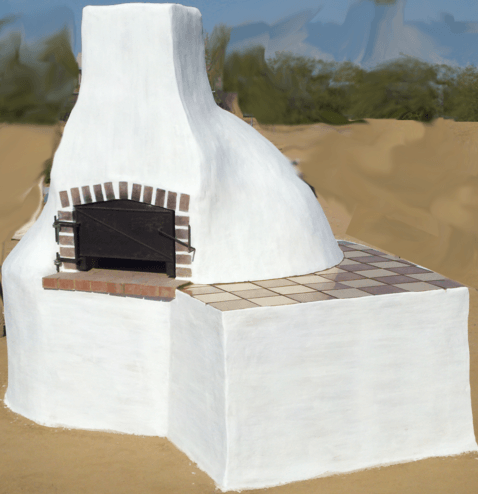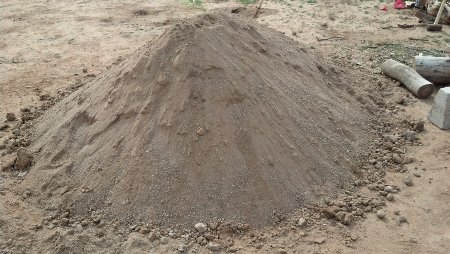Wow what a day! As you can see in the picture I just finished unloading sand. This was my second trip to the wash. I want to make a comment about the weight of sand. I know we don’t think about it much but, sands weighs a lot. I borrowed my friend’s truck this time to get the sand so I didn’t have to make a bunch of trips. A big word of cation here, pay attention to the truck tires! I didn’t know that the air pressure in the tires was low. So I got less than half of the truck bed loaded with sand and then noticed the tires were flattening. Oh that’s bad! So I very quickly stopped loading the truck with sand and then slowly drove the truck home. After I emptied out the first load I checked and added air to all of the tires. Then I went back and got a second load of sand. This time I filled the truck bed about 2/3 full, just to be safe. The truck drove much better and handled the load of sand much better with the extra air in the tires. So just remember to check your tires before you go down and start filling up the bed of your truck.
I am going to start laying up my foundation bricks and then more adobe for the rest of the counters. I have more clay earth in my yard than I could ever know what to do with but, sand is a different story. So I go down to the closest wash and get my sand. For those of you wondering if this is legal I called both the county and ADOT to ask if I could collect the sand. I was told that as long as it wasn’t put there for use by the county or ADOT and it was on the side of the road then yes it was legal to collect.
Since the local wash flooded really bad over the winter it placed large amounts of clay and sand on the roadway. That sand and clay was then scraped off of the road and just placed on the side of the road. When I say large amounts I’m talking about piles 4 feet high for about 60 feet on either side of the road. For making adobe bricks this is a gold mine. I think I could build an entire house with the sand sitting on the side of the road. Just to put it in perspective for you, the picture of the pile of sand was dug out of a section of 1 pile. I dug a hole into the pile about 5 feet wide and less than halfway through the pile.
So with that I figure I should have access to plenty of sand. With that in mind my next step is to begin making the foundation bricks. My foundation bricks will be the standard adobe brick clay, sand and straw mix but, I will also include some slacked lime in the mix. By adding the lime, clay and sand together that is the recipe for the classic Roman cement. I’ll be adding the chopped straw for additional strength in the bricks. This will work well as a foundation and be water proof. I used the same type of bricks as the foundation bricks for the outside wall of the base for the large oven. They have held up and worked great. As I already mentioned before I will use red brick for the entryway and step so as to protect the floor from wear or damage on the corners.
I want to point out that the mortar that I will be using for the red bricks and the lime stabilized bricks will be a clay, sand and lime mix. This will allow all of the bricks to bond well. I will switch to the standard clay and sand mix for all of the other bricks.
Now I need to measure the perimeter so I can figure out how many lime stabilized bricks I’ll need, then it’s time to begin making bricks.

